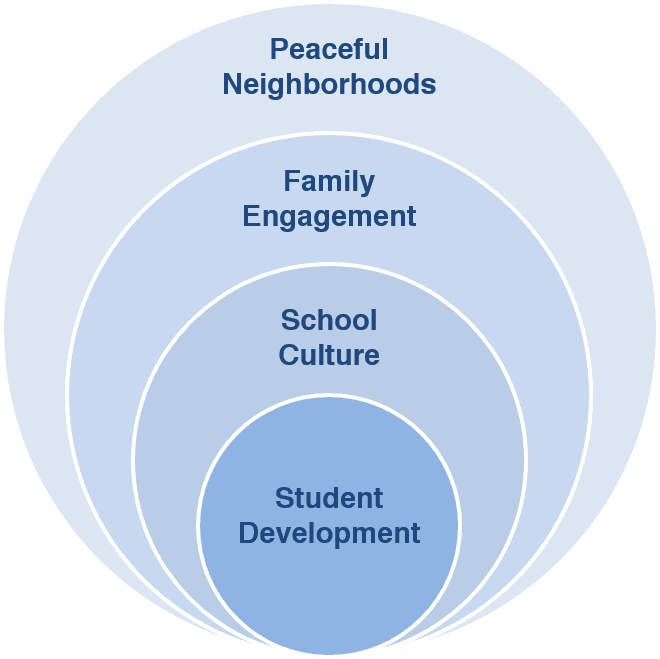Peace Works
Other initiatives
The Center on social media
Problem with this webpage?
Report an accessibility problem.
To report another problem, please contact christopher.jeske@marquette.edu.
Peace Works adheres to a model of progressive transformation. Learning peacemaking and conflict resolution skills can positively impact a student's experience of and contribution to school culture, family engagement, and peaceful neighborhoods. These skills are best learned through relationships and reinforced through school, family, and community interactions. The below model of change is adapted from The Social-Ecological Model: A Framework for Violence Prevention by Centers for Disease Control and Prevention.

The Peace Works curriculum is research-informed and grounded in three core practices:
The Peace Works program has three main components: